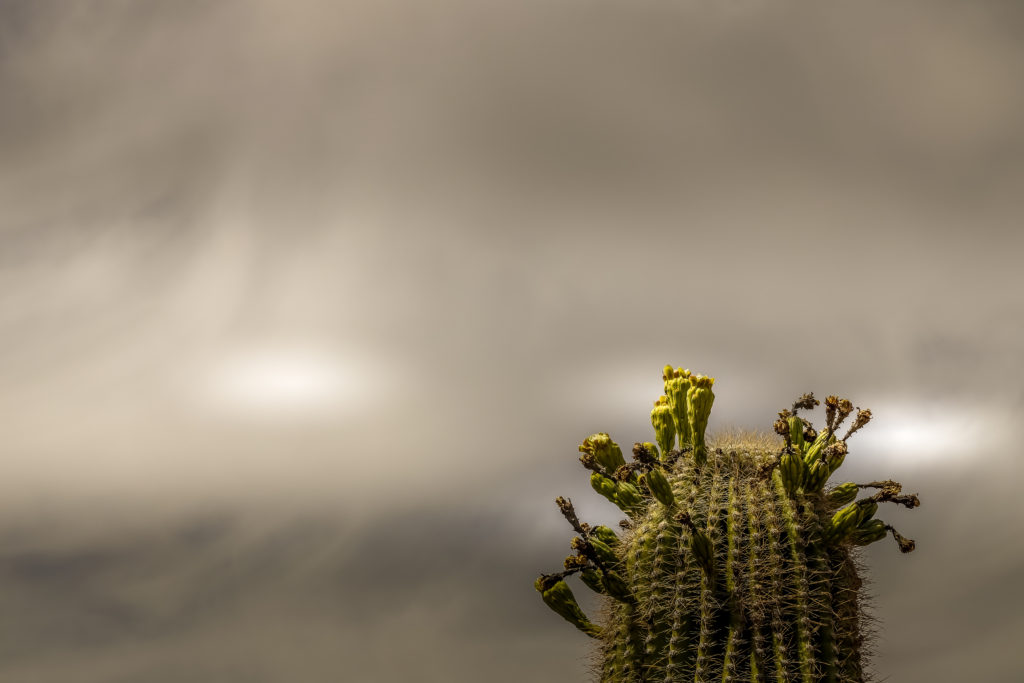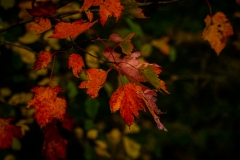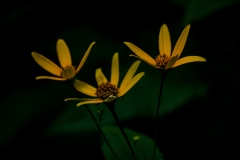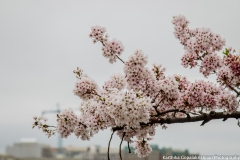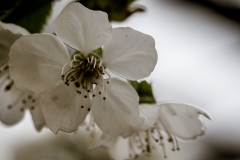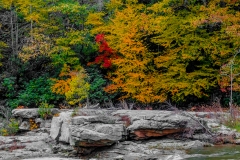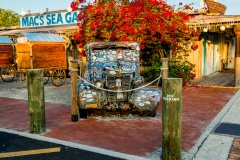Saguaro National Park
The moment I saw those giant cactus plant, I have been excited to see them in person. I have never seen such a huge cactus so far and wanted to hug them when I see them in person, little did I know about the thorns in them by then. And it’s such a wonderful sight to see the mountains lined with Saguaro trees!
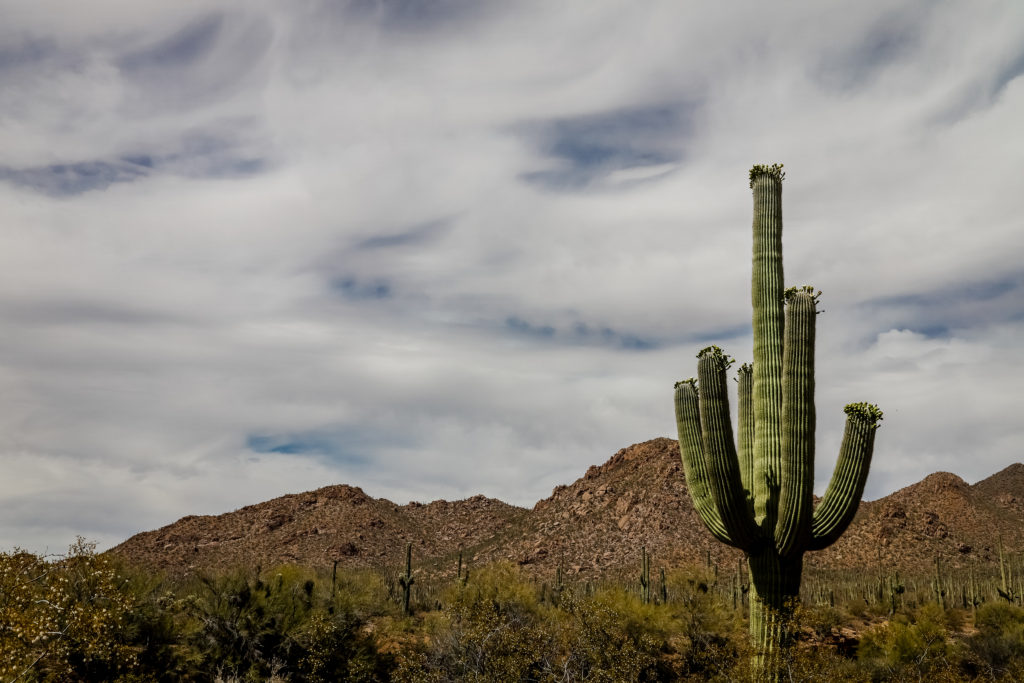
Saguaro Tree
Saguaro National Park in the district of Tucson, Arizona, and the park is 2 hours away from Phoenix. We stayed in an Airbnb in Phoenix and we decided to start early to explore the Park. The tree looks like a human with hands when watched from distance and one could see mountains lined with Saguaro trees throughout your drive from Phoenix to Tucson. I loved these giant cactus but then the soaring high temperature in Arizona roasted me. And these trees look stunning during sunset. It’s such a pleasant sight to watch these human-like cacti trees silhouetted against the orange-red sun setting in the desert.
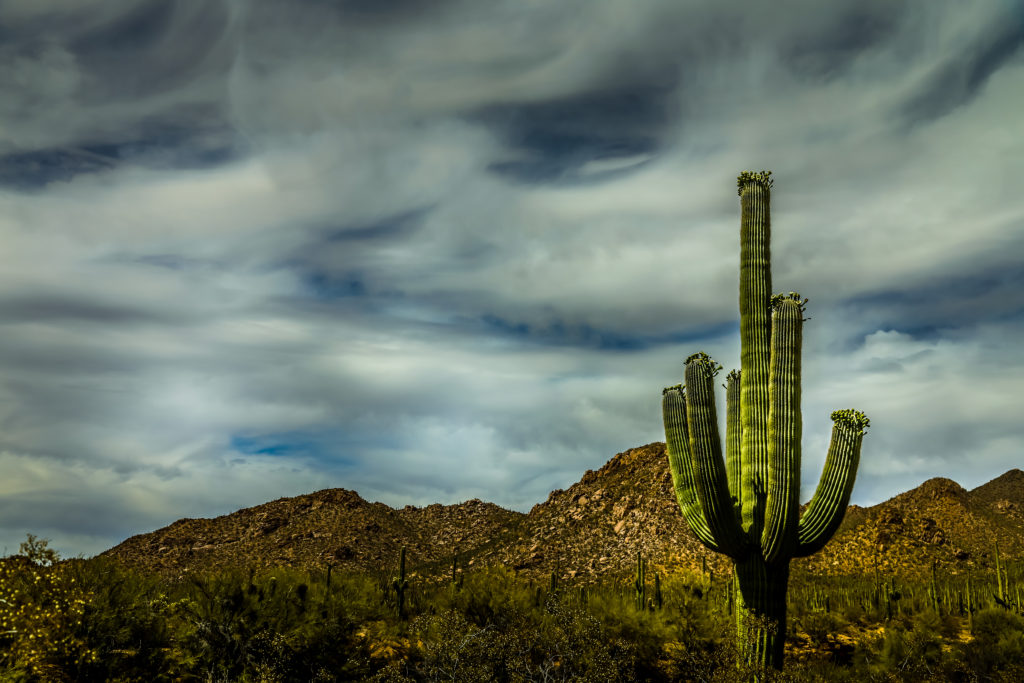
President Herbert Hoover established the area as a national monument in 1933. It was upgraded to full National Park status in 1994, and now encompasses 91,442 acres of wilderness that is as beautiful as it is harsh. During the Great Depression, the Civilian Conservation Corps was extremely active in the park, building everything from serpentine erosion barriers to the many road signs, picnic benches, and shelters visitors still enjoy to this day.
What is Saguaro?
First things first – The word has to be pronounced as sa-wah-ro and I get you, I have been also pronouncing the word wrongly. Saguaro is the largest cacti that grow only in the Sonoran desert.
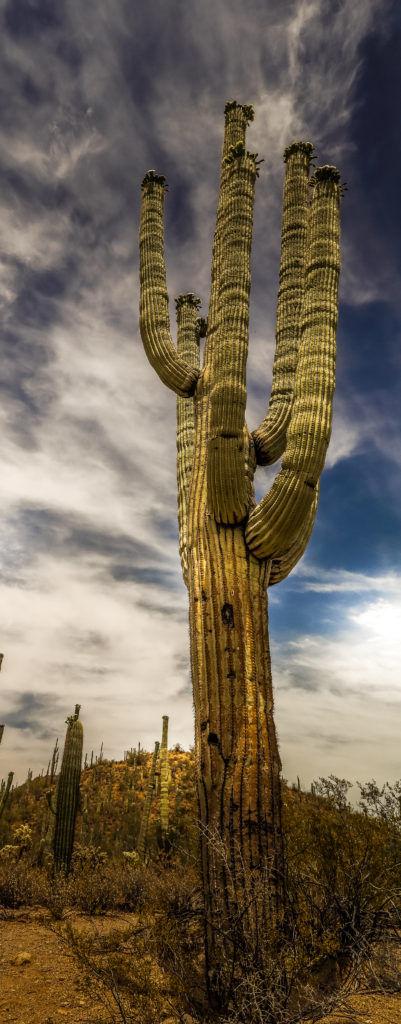
Saguaros are a very slow growing cactus. In Saguaro National Park, studies indicate that a saguaro grows between 1 and 1.5 inches in the first eight years of its life. These tiny, young saguaros are very hard to find as they grow under the protection of a “nurse tree”, most often a paloverde, ironwood or mesquite tree. As the saguaro continues to grow, its much older nurse tree may die.
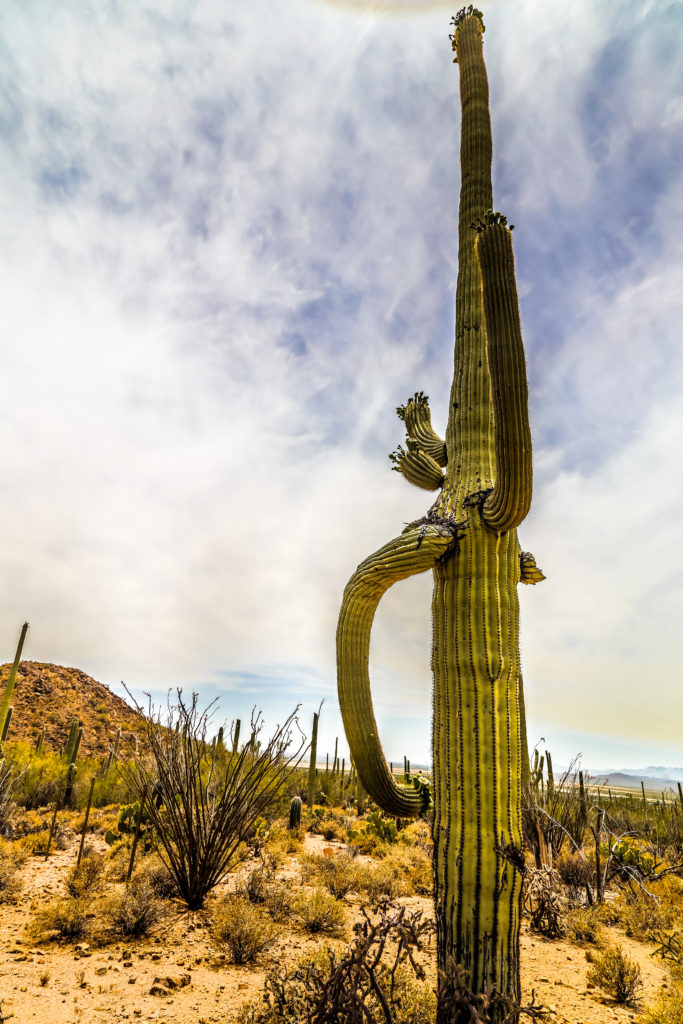
Branches normally begin to appear when a saguaro reaches 50 to 70 years of age. In areas of lower precipitation, it may take up to 100 years before arms appear. When a saguaro reaches 35 years of age it begins to produce flowers. Though normally found at the terminal end of the main trunk and arms, flowers may also occur down the sides of the plant. Flowers will continue to be produced throughout a saguaro’s lifetime.
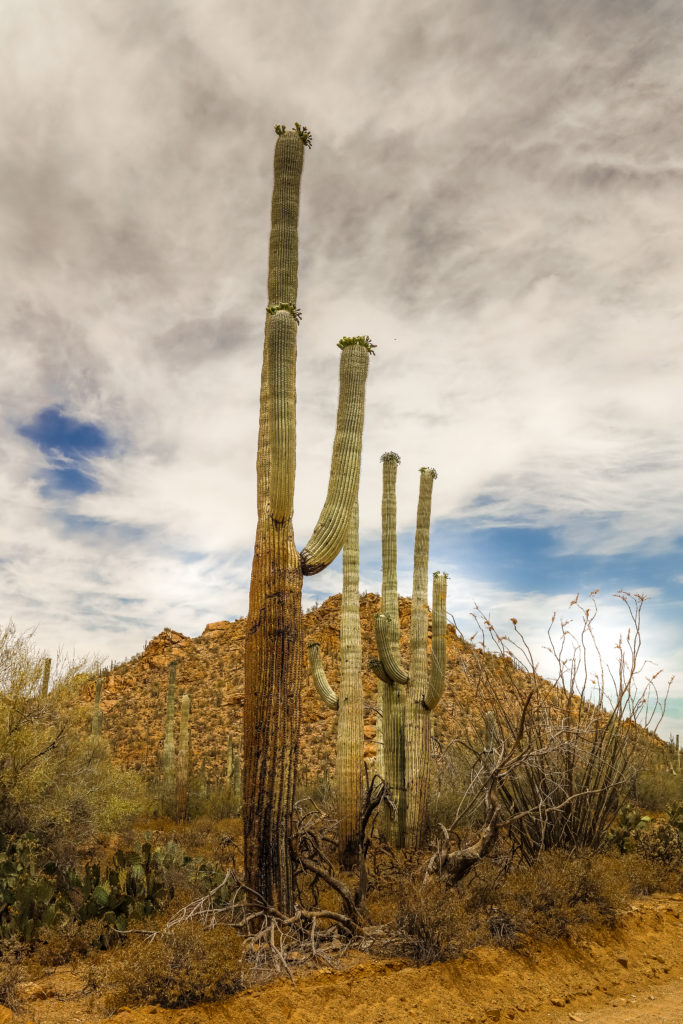
An adult saguaro is generally considered to be about 125 years of age. It may weigh 6 tons or more and be as tall as 50 feet. The average life span of a saguaro is probably 150 – 175 years of age. However, biologists believe that some plants may live over 200 years.
The roots of a saguaro grow out from the plant in a radial fashion, several inches under the ground. During heavy rain, a saguaro will absorb as much water as its root system allows.
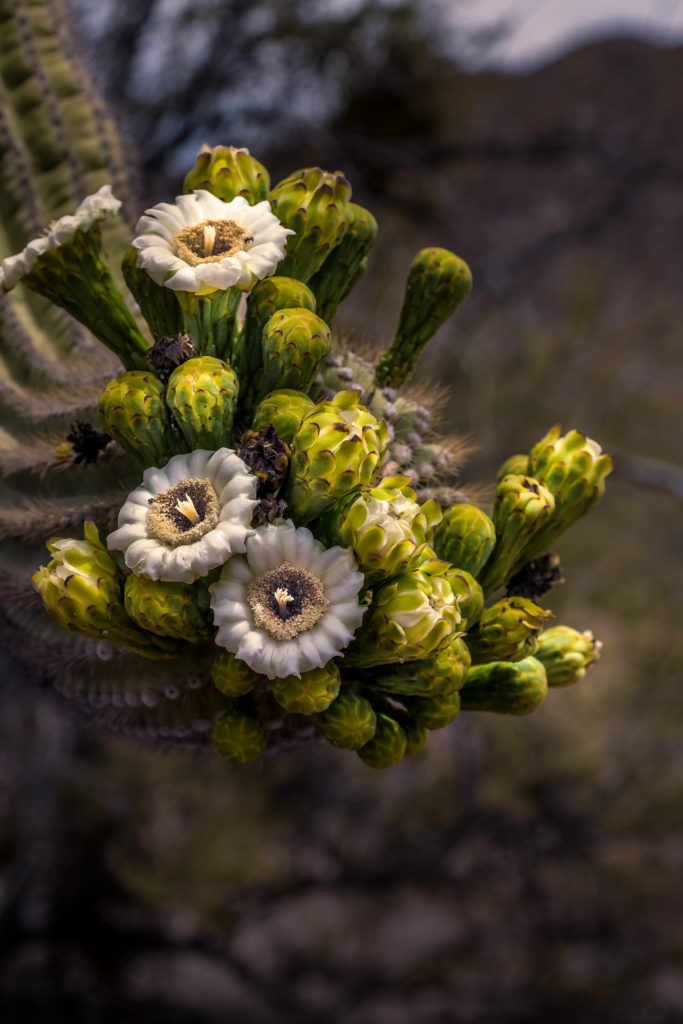
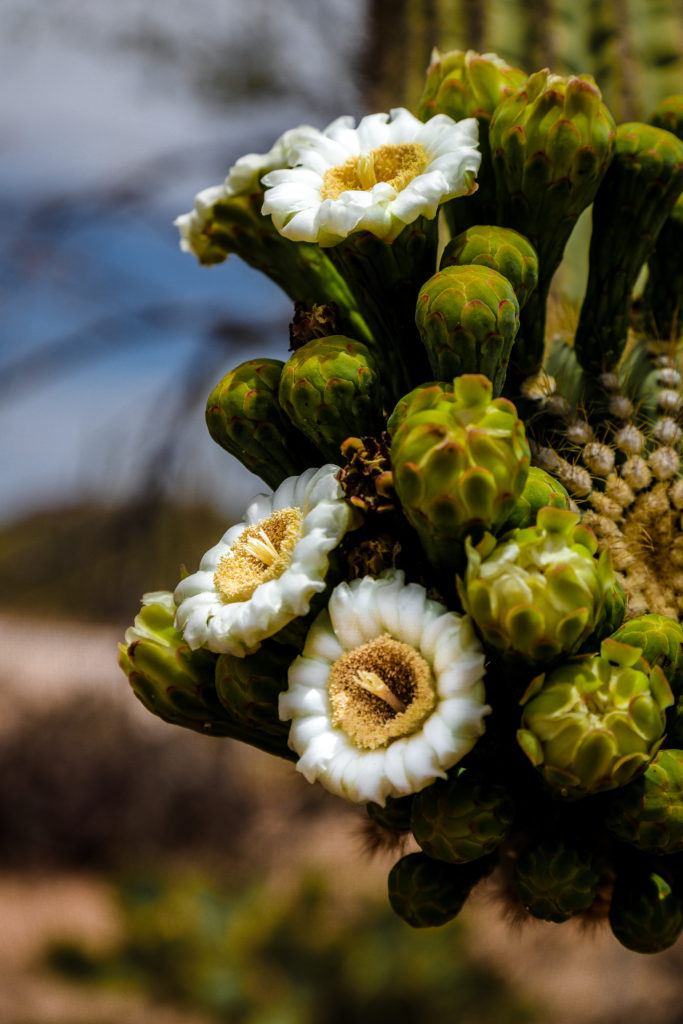
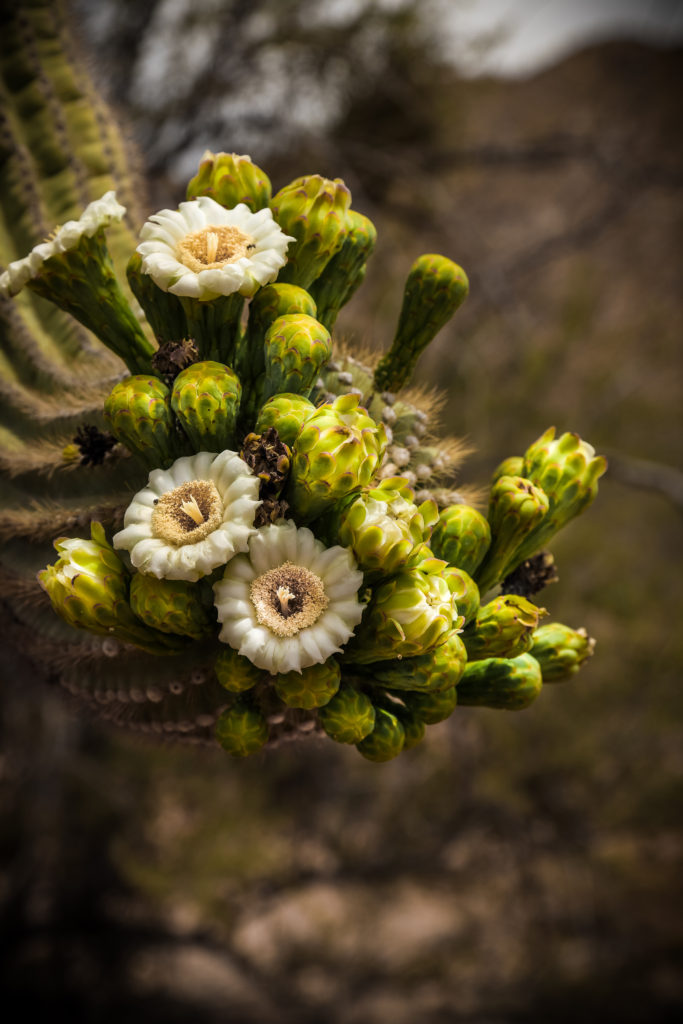
To accommodate this potentially large influx of water, the pleats allow the flesh to soak up water, expanding like an accordion. Conversely, when the desert is dry, the saguaro uses its stored water and the pleats contract.
Saguaro National Park
The park has two different districts – Rincon Mountain District in the east and Tucson Mountain district in the west with two different ecosystems. The park has entrance fees and two visitor centers. The two districts are 30 miles apart and one has to drive on the streets of Tucson which will very well take an hour. But then it is possible to visit both the districts of the park if one plans properly and knows what to do in a day.
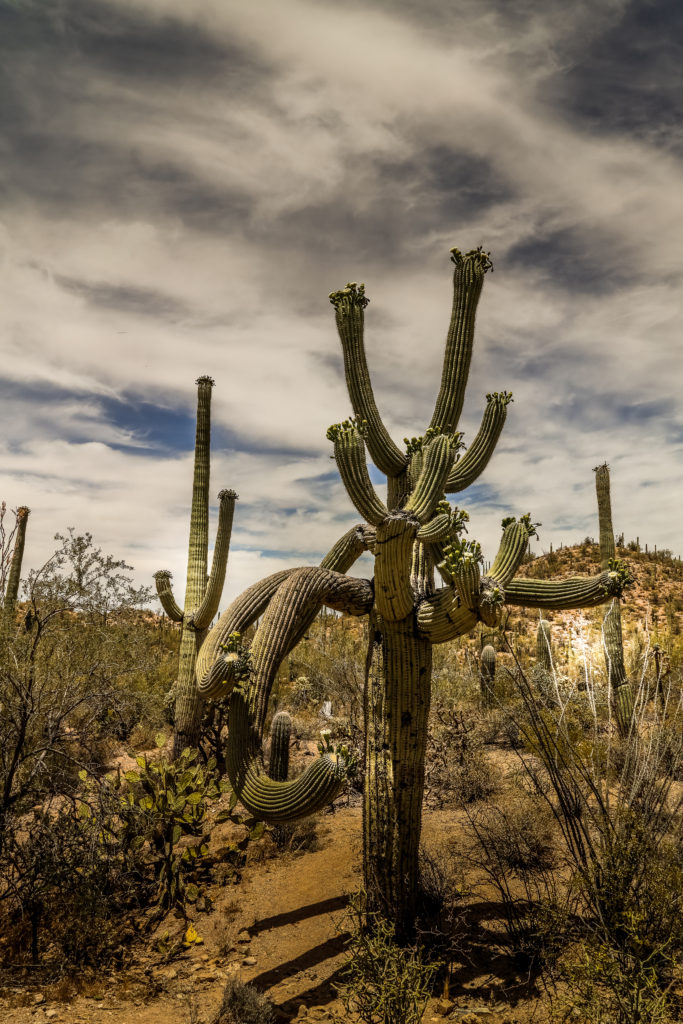
Rincon Mountain District
The east side of the park is the least visited of the two districts in the park but then, it is worth to visit it. I highly recommend to start your day early and visit the east side of the park in the morning followed by the west side.
If you venture into the Rincon Mountains, one can climb through grasslands, oak-pinyon-juniper woodlands, and eventually to a coniferous forest dominated by ponderosa pine, aspen, and Douglas fir.
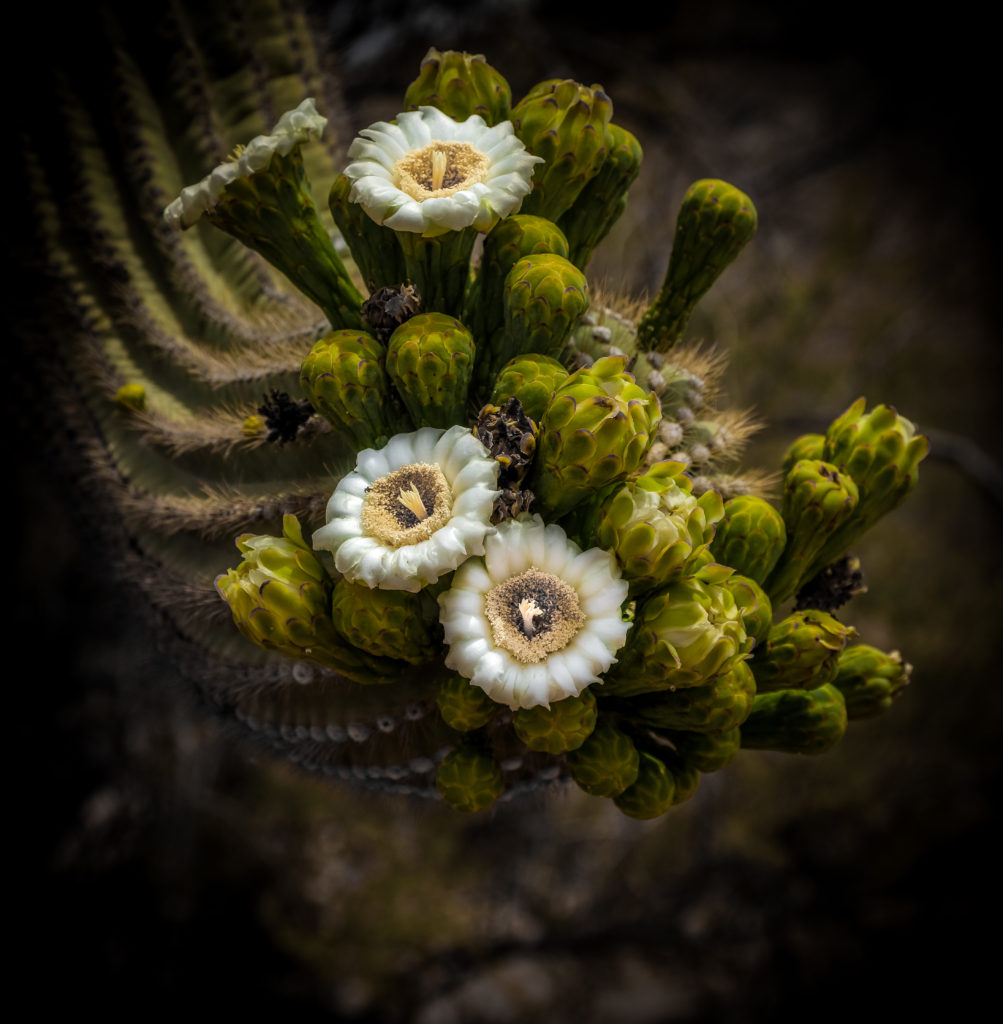
Saguaro Flowers

Saguaro Flowers
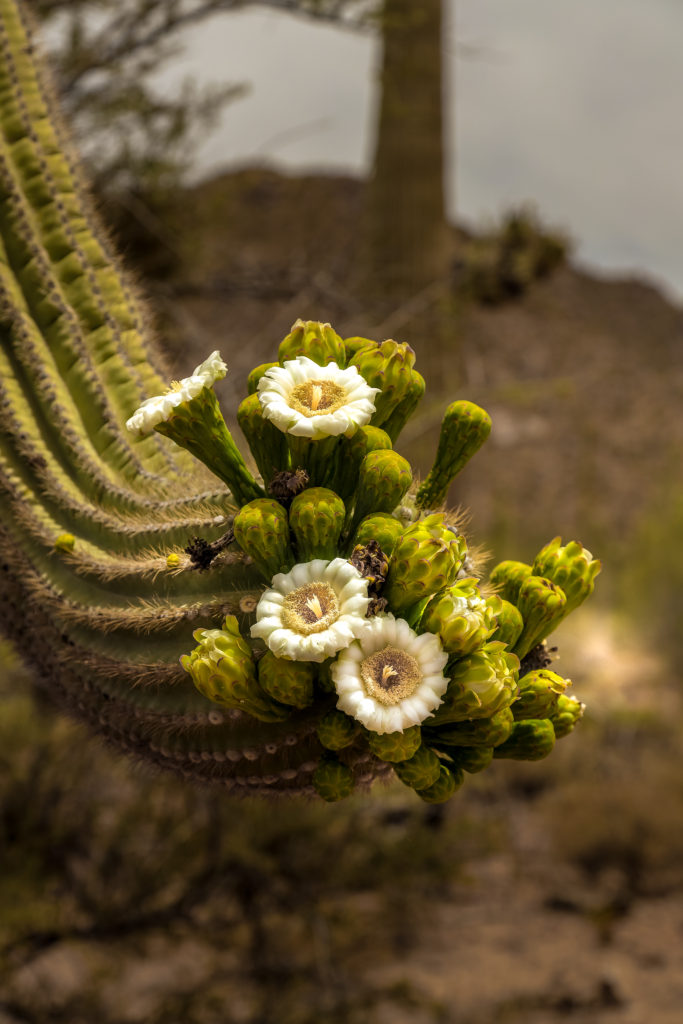
There is a visitor center in the Rincon Mountain District where one can see the park film, displays, and a small store. The east side of the park is not crowded with Saguaros like west side but then one can explore the other varieties of Cactus. Most of the regions in the east side are not accessible by road and you need valid permit to do backcountry hikes.
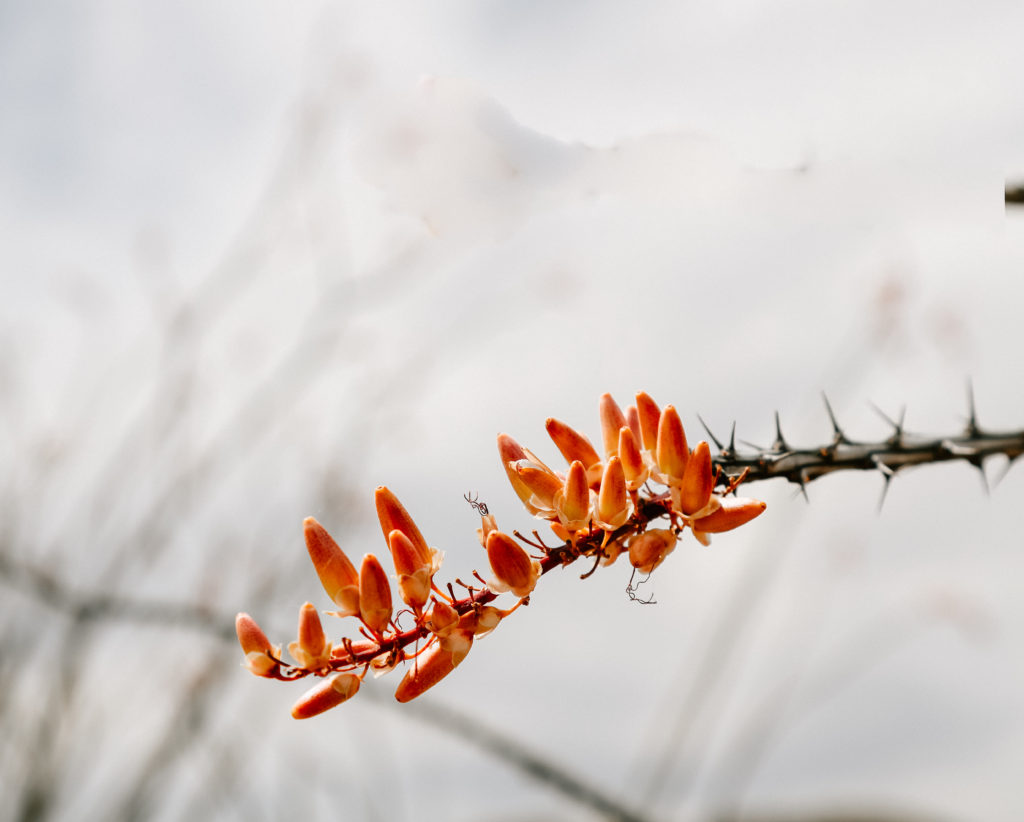
Desert Life
Things to do in Rincon Mountain District
Cactus Forest Loop
It’s an 8-mile loop drive with a beautiful view of Rincon Mountains. It is a paved road. The easy 1-mile Freeman Homestead Trail is one of the best short hikes to get up close to some of the biggest, most mature saguaros in the park. One can see other varieties of cactus other than saguaros along the drive like Prickly Pear, Cholla cactus. There are ample chances to see bright yellow Cactus flowers if you visit the park during early summer. The road is open sunrise to sunset. The loop drive offers a close and leisurely look at a variety of Sonoran Desert life.
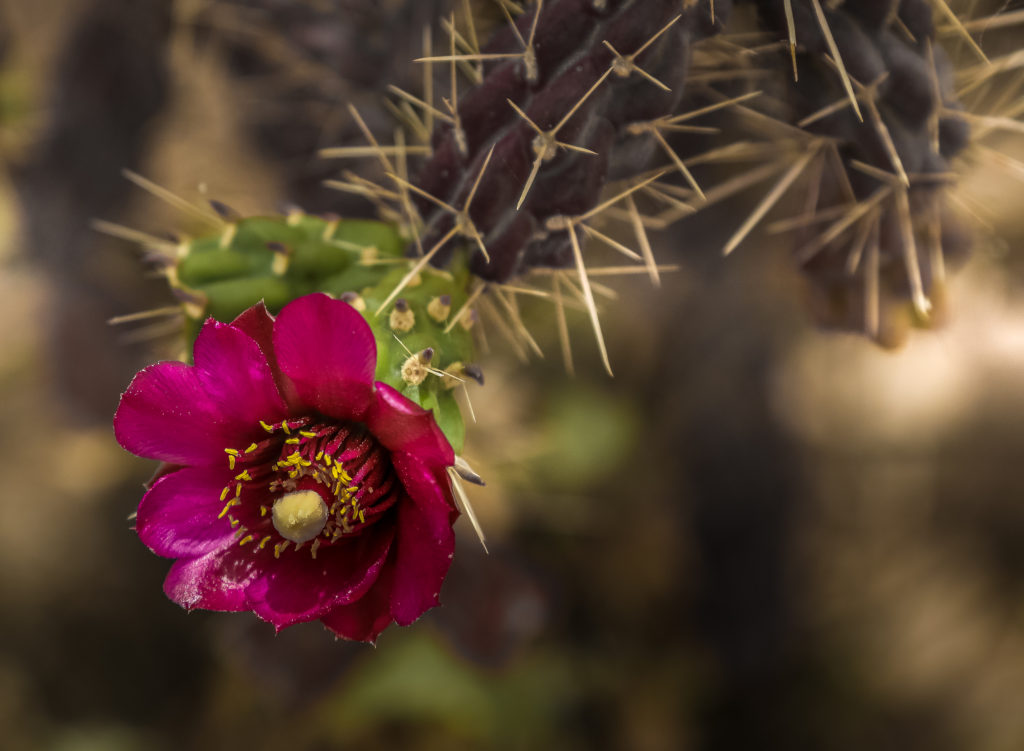
Pinkflower hedgehog cactus
Desert Ecology Trail
The 0.25 mile paved Desert Ecology Trail, off Cactus forest drive, lets you explore desert life. This is a self-guiding trail and wheelchair-accessible. The trail is great for the sunset!
There are two picnic areas in the Rincon Mountain District and each has picnic tables and restrooms but then no water.
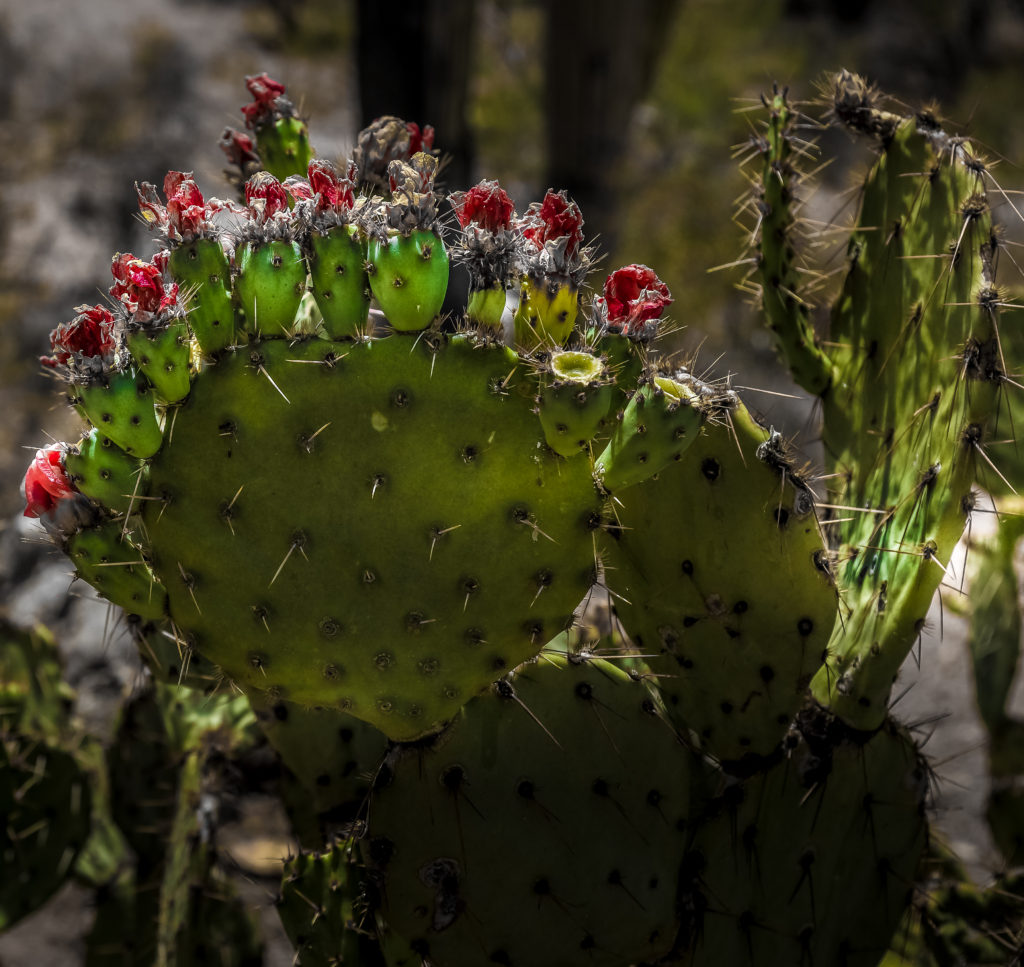
Prickly Pear Cactus
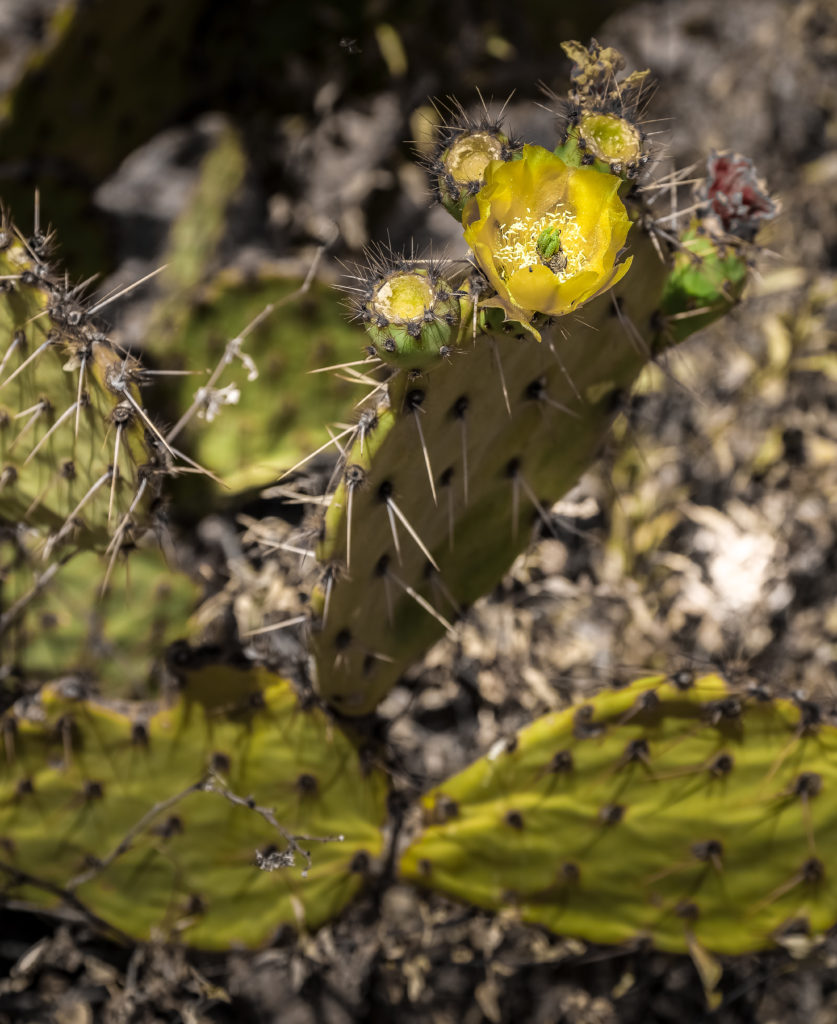
Cactus Flowers
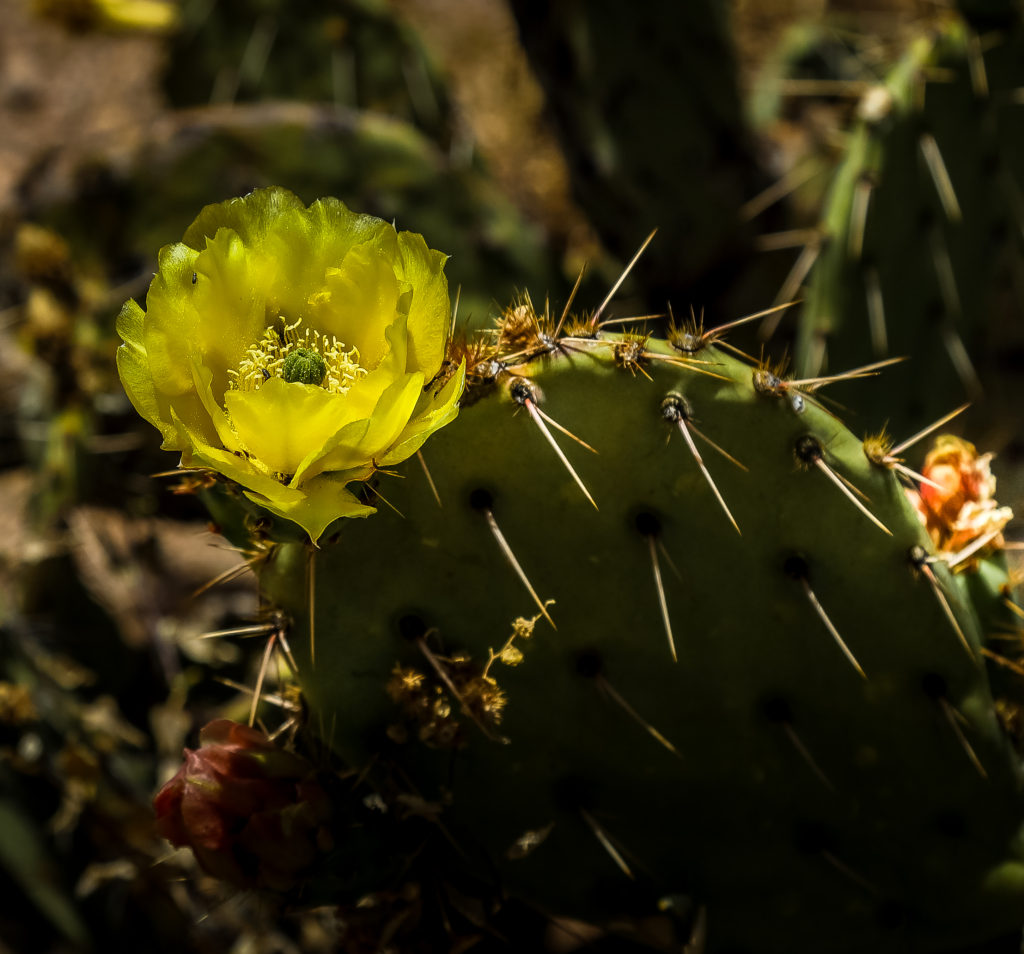
Cactus Flower
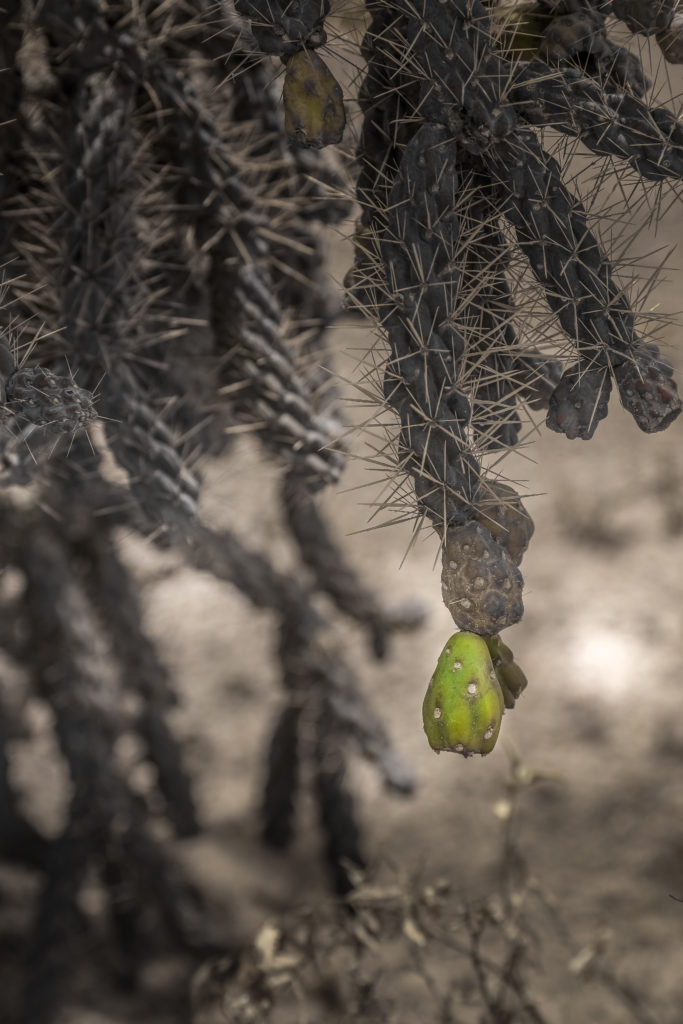
Grape Cactus
FAST FACTS:
- Driving distance between west and east districts is 33 miles and allow 60 minutes for the drive
- Water is available only at visitor centers. Carry and drink water even if you don’t feel thirsty
- Only Pit toilets are available in the picnic areas
- The visitor centers are only open from 9 am to 5 pm Mountain Standard Time
- This part of Arizona does not observe daylight saving time
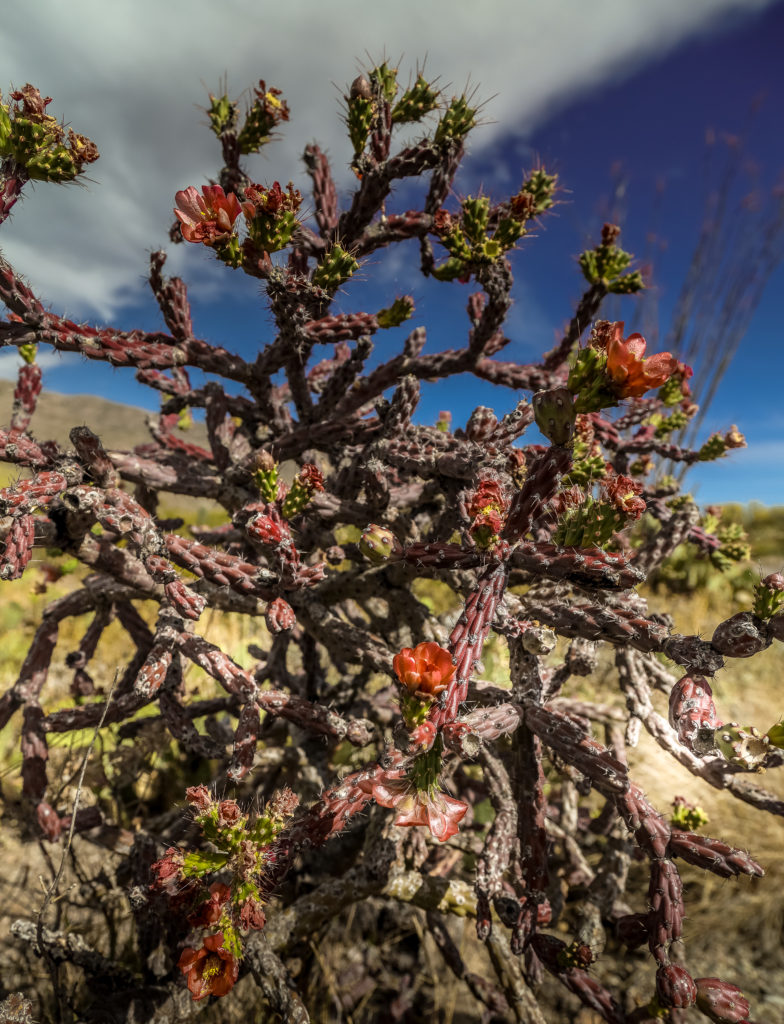
Pinkflower hedgehog cactus
Tucson Mountain District
Tucson Mountain District is the most visited part of the park and the west side has a larger concentration of Saguaro trees compared to the east side.
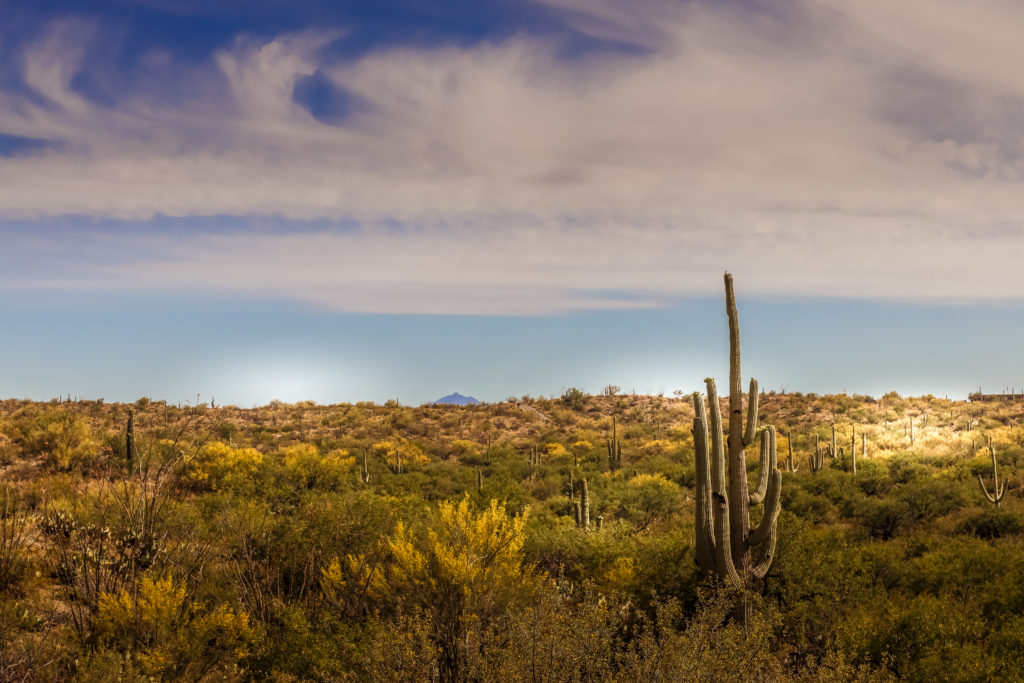
Things to do
Bajada Loop Drive
The Bajada Loop Drive is a scenic route through the lower elevations of the Tucson Mountain District of the park. It is 6 miles in length and is gravel, except for a small section along Kinney and Sandario Roads. These roads are open to all vehicles, pedestrians, and bicycles. The loop is open to vehicles from dawn to dusk.
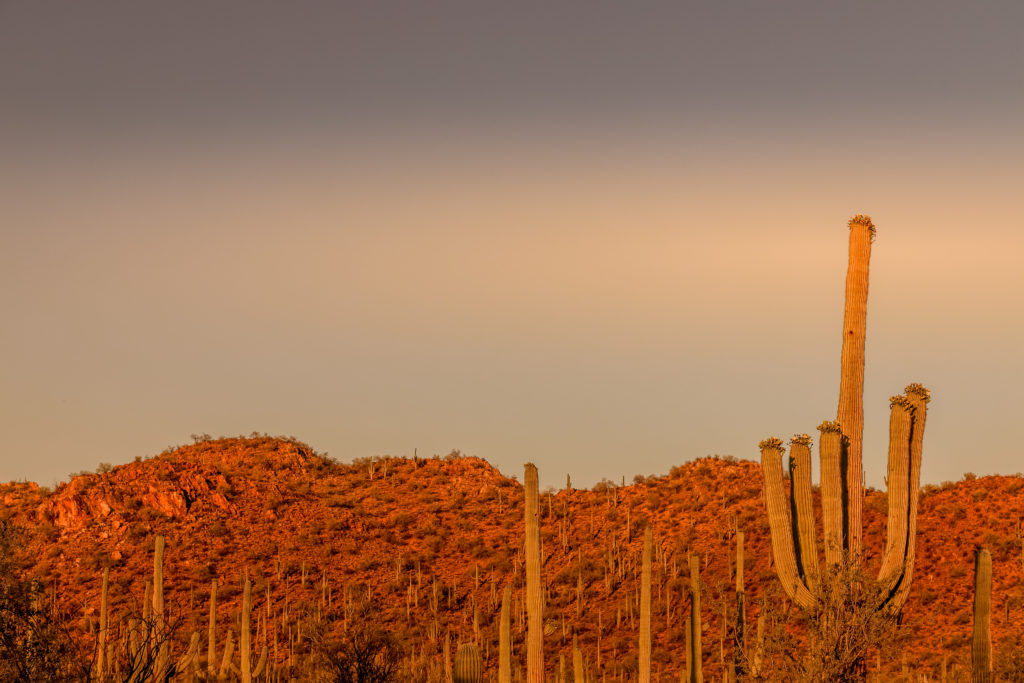
Saguaro Trees at Sunset – Desert Discovery Trail
Valley View Overlook Trail
Along the Bajada Loop drive is the Valley View overlook trial, 0.8-mile roundtrip with views of the mountains, desert and saguaro forests.
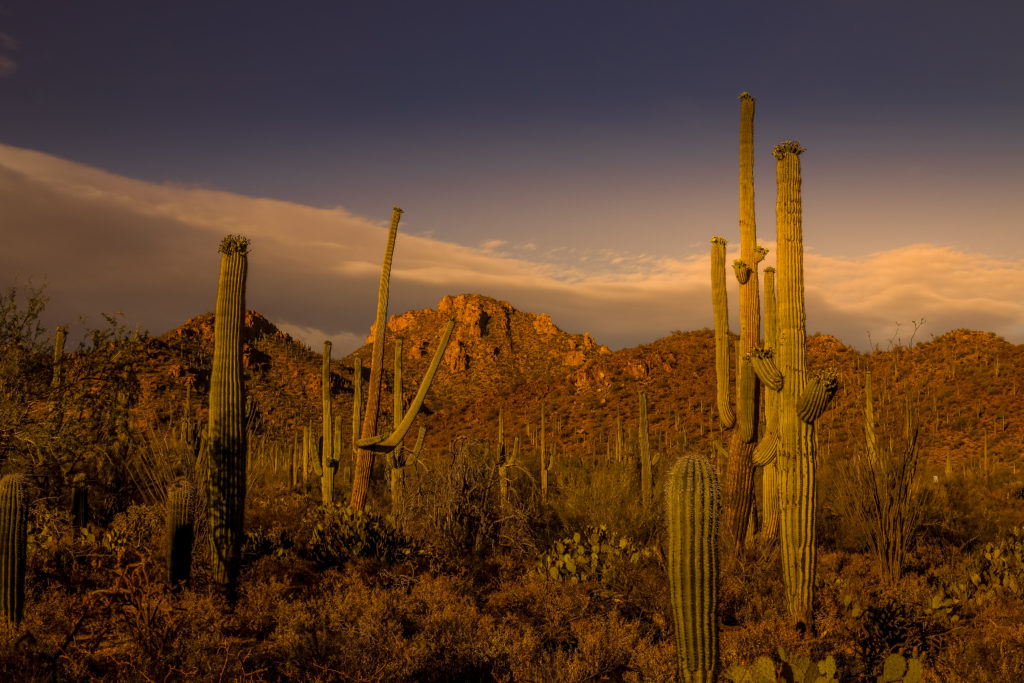
Saguaro Trees at Sunset – Desert Discovery Trail
Cactus Garden Trail
Just outside the visitor center is the Cactus Garden Trail, a wheelchair-accessible walkway through a variety of desert plants. Another short unpaved trail follows a sandy wash behind the visitor center. The trail provides offer to see a wide variety of cactus plants like Prickly pear, barrel cactus, Paloverde and also tiny saguaro plants growing under nurse trees.
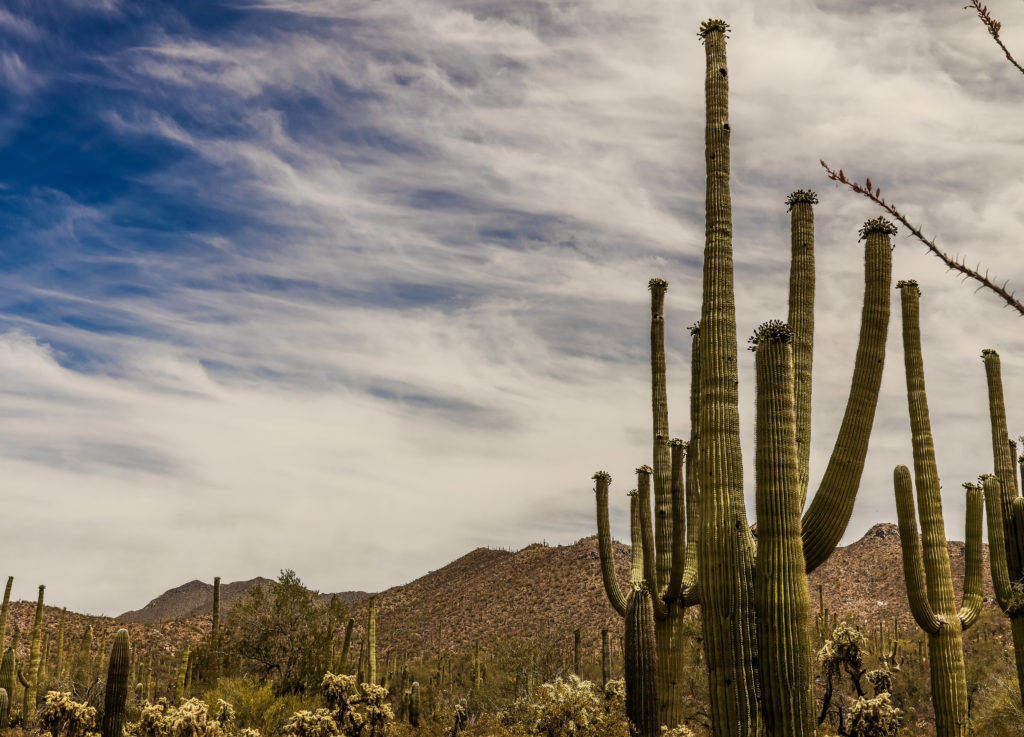
Desert Discovery Nature Trail
It is a flat pave 0.5-mile loop through a stand of large saguaros and it’s wheelchair-accessible. The trail is great for sunset and these trees look beautifully illuminated with bright orange rays of the setting sun.
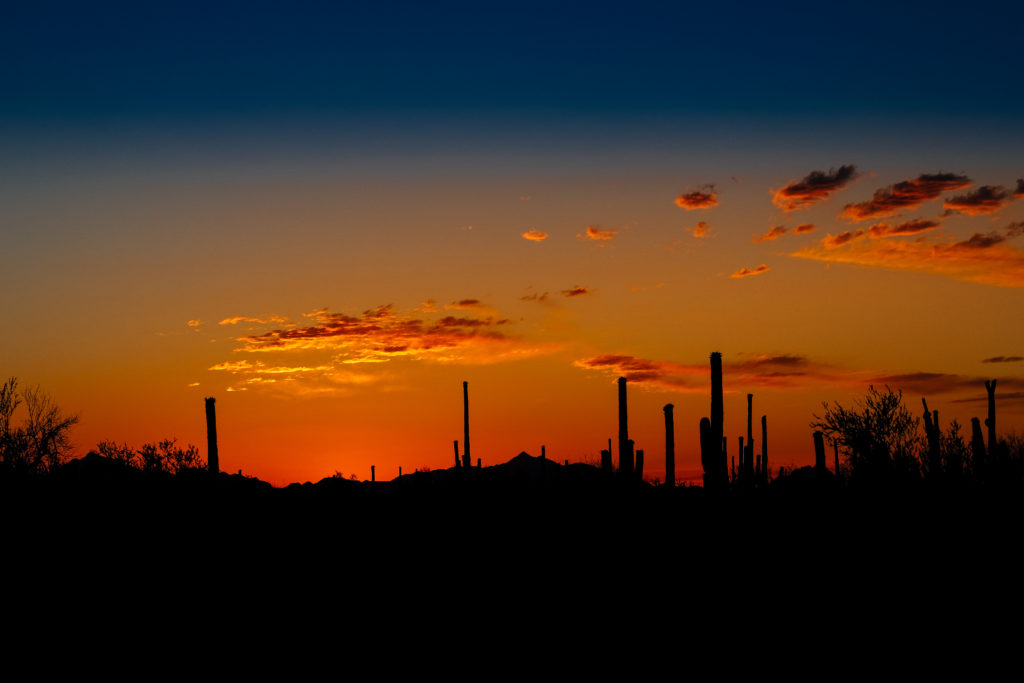
Saguaro Trees at Sunset – Desert Discovery Trail
Petroglyphs
The Petroglyphs are located at Signal Hill picnic area. A 0.3-mile roundtrip trail allows you to see dozens of drawings etched into the rock. These date from the Hohokam period 450 -1450CE. The trail is unpaved with rock steps.
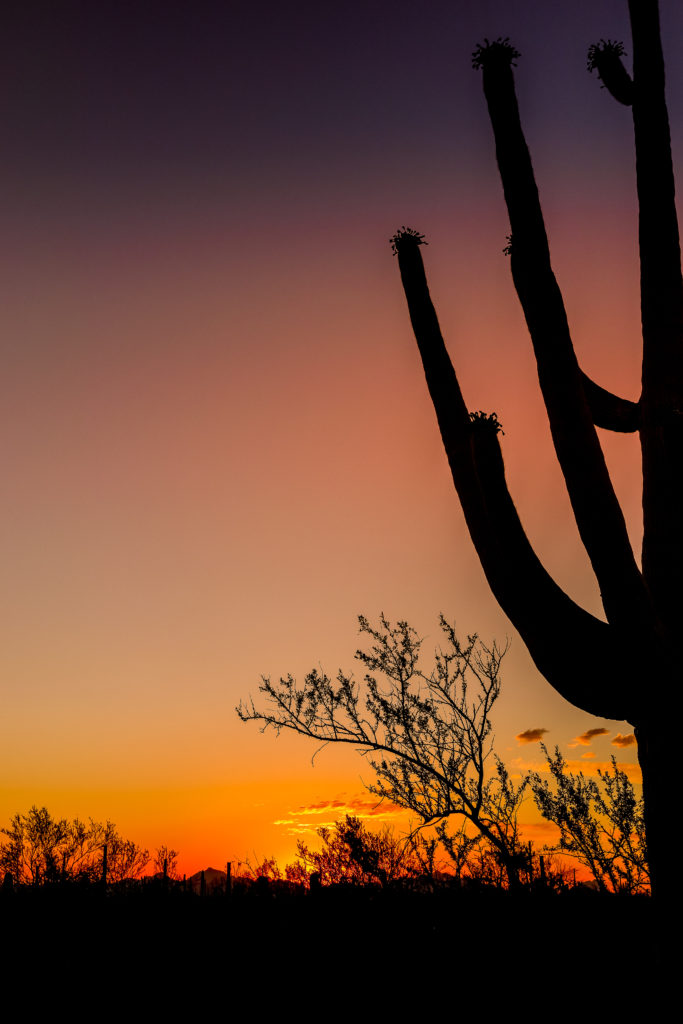
Saguaro Trees at Sunset – Desert Discovery Trail
My Recommendations:
- This part of Arizona is extremely hot so know your limits
- Attempt hikes only if you are strong enough to bear the extreme heat
- Carry water and sip it often to prevent yourself from exhaustion
- The best bet is to drive along the loops roads in East and Westside.
- Walk along the Desert Discovery Trail and Desert Ecology trail to learn about the desert ecosystem and a wide variety of desert plants
- Ensure caution while walking among the cactus plants as they prick
- Watch the Park film to know about desert life
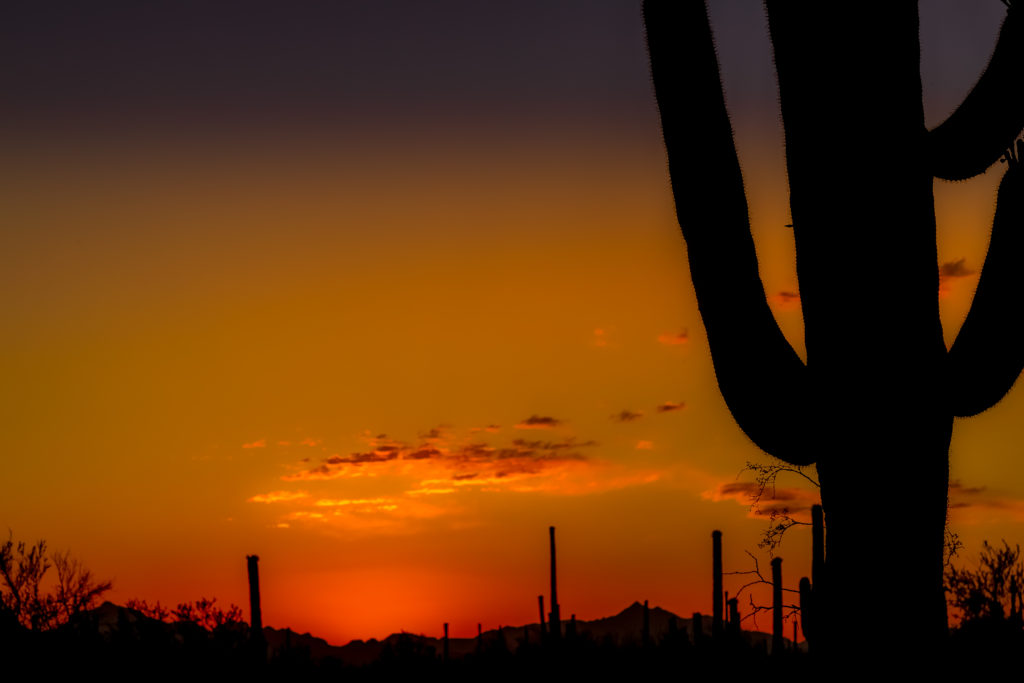
Saguaro Trees at Sunset – Desert Discovery Trail
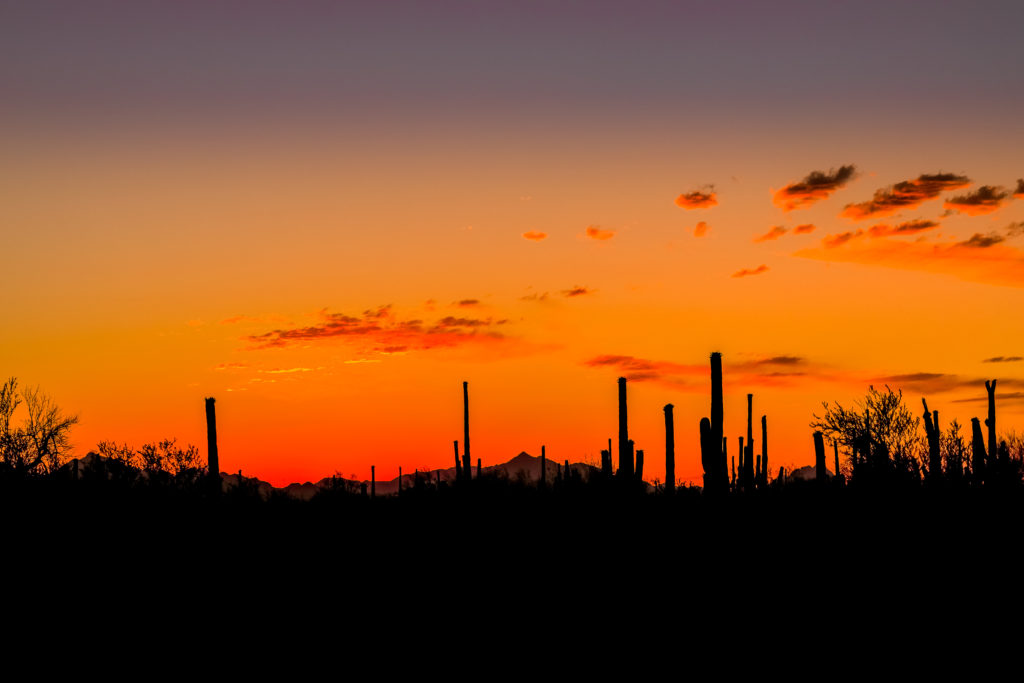
Saguaro Trees at Sunset – Desert Discovery Trail
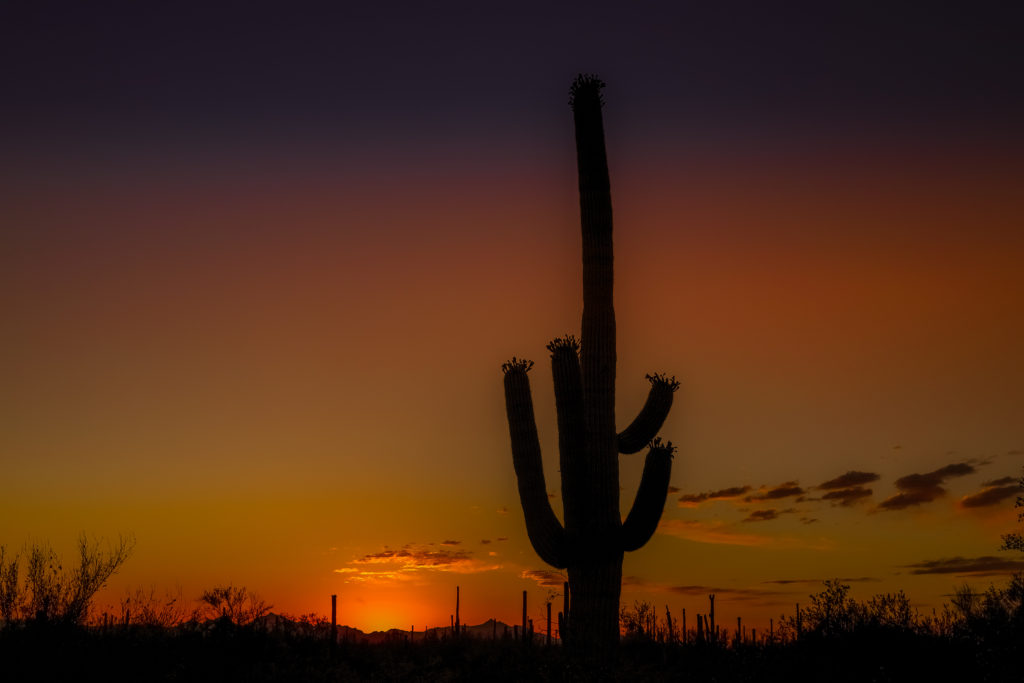
Saguaro Trees at Sunset – Desert Discovery Trail
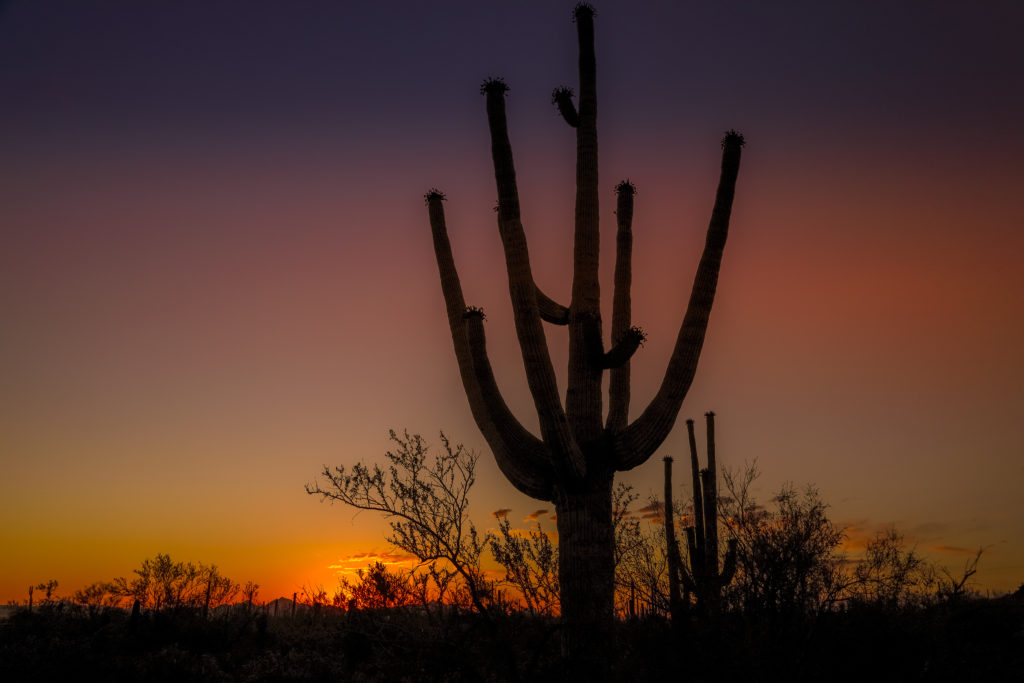
Saguaro Trees at Sunset – Desert Discovery Trail

Have you visited Saguaro National Park? If not, I highly recommend you to include it in your list and check out those giant cactus trees.
If you have already visited, do let me know your favorites in the park and I would love to know them from my readers.

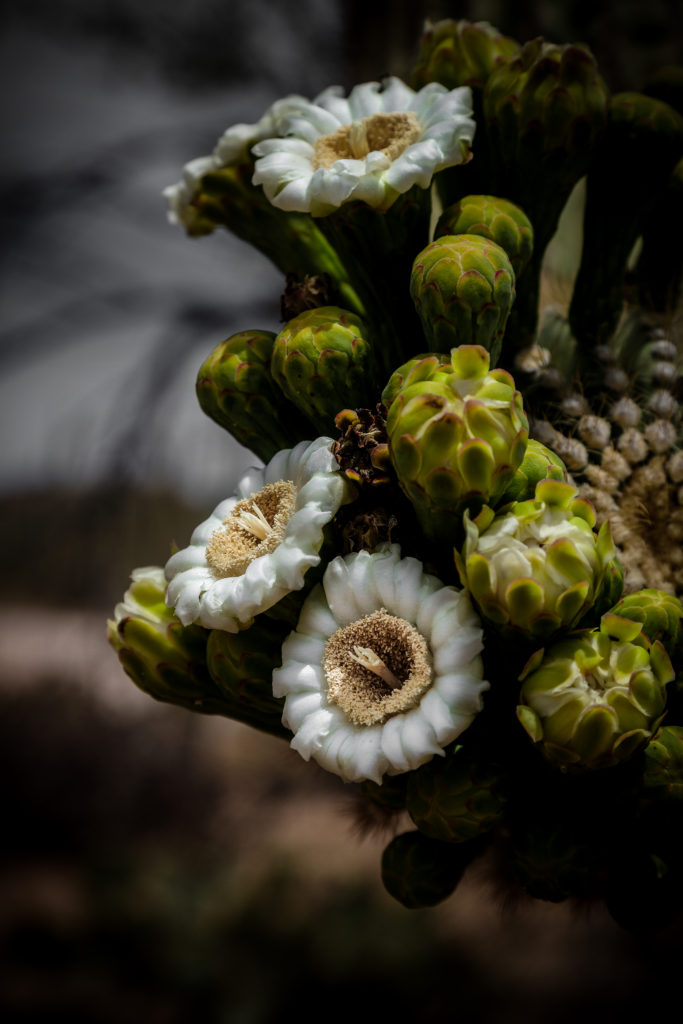
Saguaro Flowers
If you like my travelogue and wish to follow my travel stories further, then do like and follow my profile here – Facebook, Google, Instagram
Thanks, Karthi

